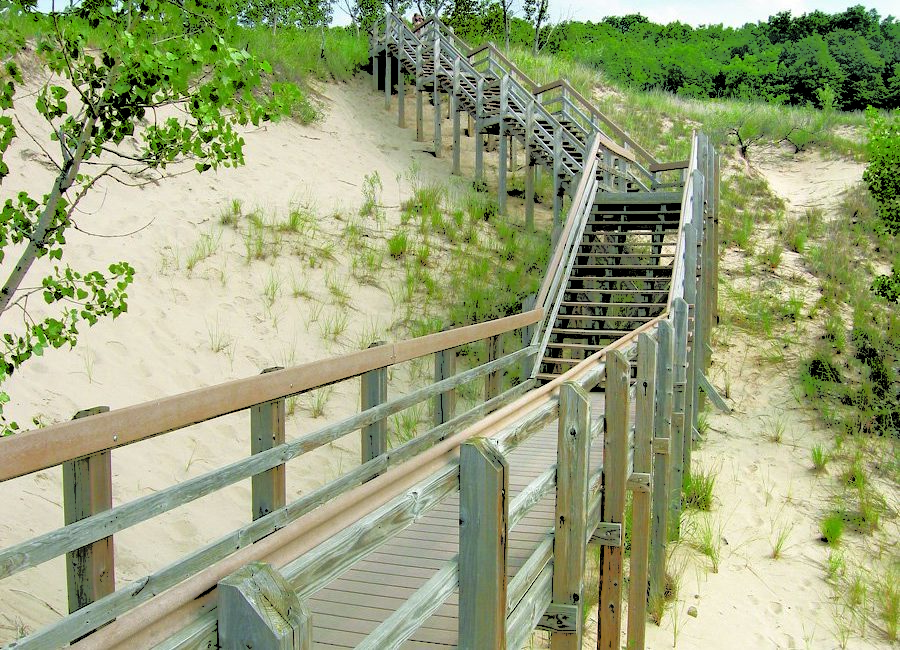
Indiana Trails: Lines in the Sand at Indiana Dunes National Lakeshore
If I had my Indiana Dunes National Lakeshore trip to do over, I would hike the Succession Trail—the most impressive of three conjoined loops in the national lakeshore’s West Beach area—twice.
A ranger had described the trail as perhaps the most ecologically unique corner of Indiana. I was skeptical. Somehow, right on the border of gritty, Rust Belt Gary, and just a few miles from roaring I-94, lay not only windswept, grass-speckled dunes, but hardwood and fragrant evergreen forests; a wetland wildlife sanctuary; and even, the ranger said, “one of the rarest habitats in the world.” We’ll see, I thought.
Farthest inland, the flat 1.6-mile Long Lake Trail follows the westernmost bank of its namesake and a shallow marsh—a renowned birding site thought to be the only place in the state to see the Red Crossbill and Long-eared Owl. Next, the 1.4-mile West Beach Trail rings a crater where sand was mined before the land came under federal protection. Restoration efforts there established a scarce “oak savanna,” a prairie-like setting of sparse trees and dense, golden grasses evocative of Africa’s dry plains; it also hosts Indiana’s lone native cactus species, the Eastern prickly pear.
The Succession Trail Loop, though, proves the centerpiece, beginning in powdery, calf-burning sand and climbing a 250-step wooden staircase up the side of a sun-parched dune. After a heart-stirring 180-degree view, the path drops down a second staircase into a bowl dense with deciduous trees shaded by high, sandy ridges. Another climb, panoramic summit, and descent takes you across more shifting dunes, and then delivers you to that precious habitat the ranger described: pockets of wet, low-lying sand known as “pannes,” which, due to their high alkalinity, support threatened and endangered plants like lakeshore rush, rose gentian, and horned bladderwort. Resembling little swamps, but without the muck, the pannes are flanked by a grove of Jack pines held over from Indiana’s post-glacial days, the southernmost indigenous colony of the trees in the Great Lakes region.
From there, a short scramble delivers you to the lakeshore and the most disappointing stretch of the hike—passage through a brick-and-concrete bathhouse and along a paved driveway. In an instant, the natural beauty I should have backtracked to see again seemed not just a hundred feet behind but miles away.

3.4 miles / Moderate
» Detour! Pinhook Bog, about a half-hour drive east of West Beach, may be the last feature of its kind in Indiana. The 300-acre bog’s lake, formed by a hunk of melting glacier, is up to 70 feet deep in some places and covered by a thick mat of sphagnum moss. Only very rare vegetation, including three species of carnivorous plants (inset), can tolerate the highly acidic water. The public may access the bog’s interior via a floating plastic boardwalk by appointment (219-395-1882) or at Sunday open houses.
» Getting There Take I-65 N to Gary, east on U.S. 12 (Dunes Highway) to National Lakeshore West Beach entrance at County Line Rd. nps.gov/indu/index.htm






